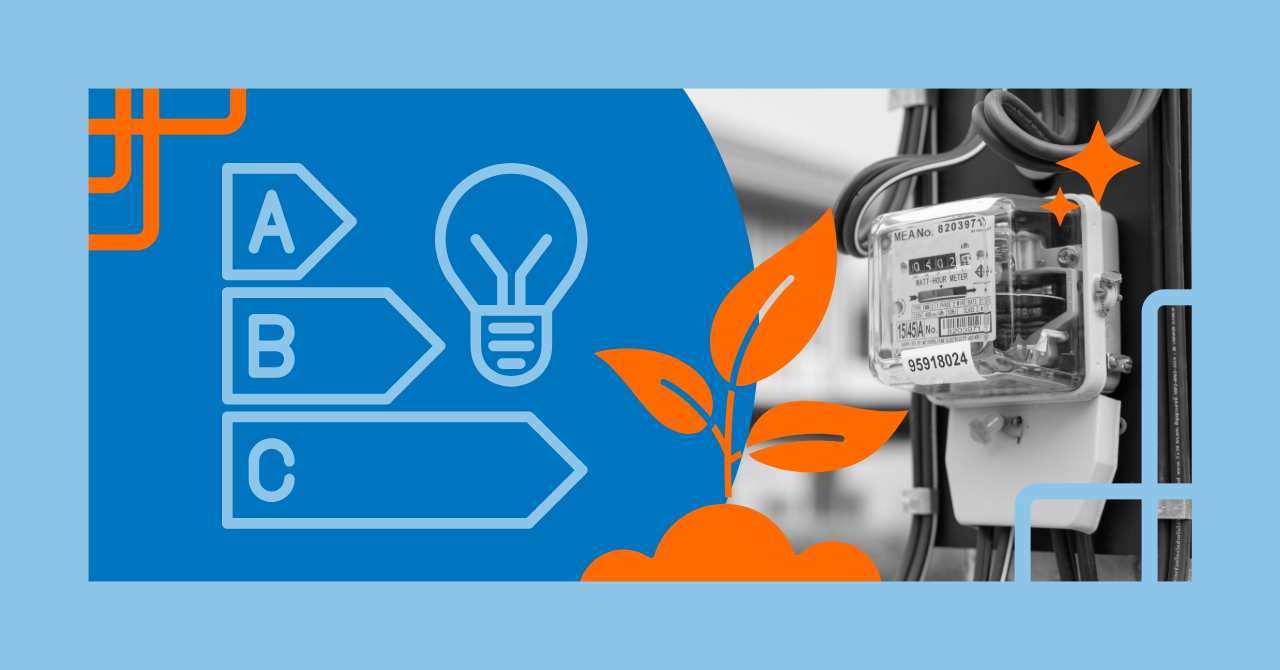The global edge AI market is experiencing unprecedented growth, projected to surge from $13.2 billion in 2023 to $62.93 billion by 2030, a remarkable compound annual growth rate of 24.6%. This explosive expansion reflects a fundamental shift in how organizations approach artificial intelligence deployment, moving processing power from centralized data centers to local edge devices where decisions need to happen in milliseconds, not seconds.
Edge AI technology represents the convergence of edge computing and artificial intelligence, enabling smart devices to process data locally and make autonomous decisions without relying on distant cloud servers. This paradigm shift is revolutionizing industries from autonomous vehicles requiring split-second collision avoidance to healthcare systems monitoring patient vitals in real time.
Key Takeaways
- Edge AI deploys artificial intelligence directly on local devices at the network edge, enabling real time data processing without cloud dependency
- Reduces latency from milliseconds to near-instantaneous responses by processing data locally on Iot devices and edge servers
- Market projected to reach $62.93 billion by 2030, driven by demand for autonomous vehicles, healthcare monitoring, and industrial automation
- Enhanced privacy and security by keeping sensitive data on-device rather than transmitting to external cloud servers
- Significantly reduces bandwidth costs and network congestion while improving operational efficiency across industries
What is Edge AI?
Edge AI combines edge computing capabilities with artificial intelligence to enable ai algorithms to run directly on edge devices like servers, smartphones, security cameras, and connected devices. Unlike traditional cloud based processing that requires sending data to a centralized data center, edge artificial intelligence processes information locally where it’s generated.
This approach to artificial intelligence deployment transforms how organizations handle real time data processing. Instead of relying on costly cloud resources and dealing with internet connection dependencies, edge ai processes data directly on local edge devices, enabling immediate responses and autonomous decision-making.
The integration involves deploying ai models that have been optimized for edge device constraints while maintaining the ai capabilities needed for complex tasks. These edge ai models can analyze data, recognize patterns, and make decisions without human interpretation or cloud processing delays.
Edge AI vs Cloud AI
The fundamental differences between edge AI and cloud computing approaches become clear when examining their operational characteristics:
| Aspect | Edge AI | Cloud AI |
|---|
| Latency | Ultra-low (1-5ms) | High (100-500ms) |
| Processing Location | Local edge devices | Centralized servers |
| Bandwidth Requirements | Minimal data transmission | High network bandwidth usage |
| Privacy | Sensitive data stays local | Data transmitted to cloud data centers |
| Internet Dependency | Operates without internet connection | Requires stable connectivity |
| Cost Structure | Lower ongoing operational costs | Higher internet bandwidth and cloud fees |
Edge technology excels in scenarios requiring immediate responses, such as autonomous vehicles that cannot afford the latency of cloud based platforms when making critical safety decisions. The benefits of edge ai become particularly evident in environments where network connectivity is unreliable or where data privacy regulations restrict sending data to other physical locations.
Cloud computing remains advantageous for compute-intensive training processes and scenarios where centralized database access and high performance computing capabilities are essential. Many organizations adopt hybrid approaches, using cloud data centers for training ai models while deploying them on edge ai devices for inference.
Edge AI vs Distributed AI
While edge AI focuses on local data processing at individual device locations, distributed AI spreads computing workloads across multiple interconnected systems. Edge ai’s ability to function independently makes it ideal for scenarios requiring autonomous operation, while distributed AI leverages collective processing power across networks.
Distributed AI architectures often incorporate both edge servers and cloud computing facility resources, creating networks where data processing occurs across various physical locations. This approach can provide more processing power but introduces complexity in coordination and potential latency issues that pure edge AI deployment avoids.
Edge AI offers the advantage of simplified architecture and guaranteed low latency since processing data directly on local devices eliminates network dependencies. Organizations must weigh the trade-offs between the autonomous reliability of edge technology and the scalable processing power available through distributed approaches.
Benefits of Edge AI Technology
The advantages of implementing edge AI technology extend far beyond simple latency improvements, delivering measurable business value across multiple dimensions of operational efficiency and strategic capability.
Ultra-Low Latency Processing
Edge ai devices achieve processing times of 1-5 milliseconds compared to the 100-500 milliseconds typical of cloud processing. This dramatic latency reduction enables applications that were previously impossible with cloud based processing.
In autonomous vehicles, this ultra-low latency allows ai applications to process sensor data and execute emergency braking decisions within the time frame needed to prevent accidents. Industrial automation systems leverage these capabilities to detect equipment anomalies and initiate protective shutdowns before damage occurs.
Healthcare applications benefit tremendously from real time processing capabilities. Emergency response systems can analyze patient vitals and alert medical staff instantly, while surgical robots can make micro-adjustments based on real time data without waiting for cloud servers to process information and send responses.
Smart devices in manufacturing environments use edge AI to maintain quality control at production speeds that would be impossible with cloud processing delays. These systems can identify defects and trigger corrective actions in real time, maintaining production efficiency while ensuring product quality.
Reduced Bandwidth and Network Costs
Organizations implementing edge ai typically see 70-90% reductions in data transmission to cloud servers, translating to substantial cost savings. Manufacturing plants report saving more than $50,000 annually on bandwidth costs alone by deploying edge ai for quality control and predictive maintenance systems.
The reduction in network bandwidth usage becomes particularly valuable in environments with large numbers of connected devices. Smart cities deploying thousands of sensors can process most data locally, sending only critical insights or summaries to centralized systems rather than streaming raw sensor data continuously.
Edge ai deployment also reduces dependency on internet bandwidth infrastructure, making systems more scalable and cost-effective as device counts grow. Organizations can expand their iot devices networks without proportionally increasing their cloud computing costs or network infrastructure requirements.
This local data processing approach proves especially valuable in remote locations where internet bandwidth is limited or expensive. Edge servers can operate autonomously while maintaining full ai capabilities, only requiring periodic connectivity for model updates or critical data synchronization.
Enhanced Data Privacy and Security
Processing data locally on edge ai devices significantly improves privacy and security postures by minimizing data transmission exposure. Organizations in healthcare, finance, and other regulated industries can maintain compliance with GDPR, HIPAA, and data sovereignty requirements more easily when sensitive data never leaves local devices.
The reduced attack surface created by local data processing limits opportunities for data interception during transmission. Edge ai security benefits from keeping data within controlled environments rather than exposing it to potential vulnerabilities in cloud computing facility infrastructure or network transmission paths.
Smart homes and personal devices particularly benefit from this privacy-preserving approach. Security cameras and smart home appliances can provide ai capabilities while ensuring that personal information remains within the home network rather than being transmitted to external servers for processing.
Financial institutions and healthcare providers find that edge artificial intelligence enables compliance with strict data protection regulations while maintaining the benefits of ai applications. Patient monitoring systems can analyze data locally while ensuring medical information never leaves the healthcare facility’s network.
Improved Operational Reliability
Edge technology provides business continuity advantages by enabling autonomous operation during network outages or connectivity disruptions. Critical systems can continue functioning and making intelligent decisions even when internet connection to cloud servers is unavailable.
Manufacturing facilities benefit from this reliability when production systems must continue operating regardless of network status. Edge ai devices can maintain quality control, predictive maintenance, and safety monitoring functions without depending on external connectivity.
Emergency response systems and public safety applications gain crucial reliability from edge AI deployment. Security systems can continue analyzing threats and triggering appropriate responses even during network failures when cloud processing would be unavailable.
The autonomous operation capabilities of edge servers prove particularly valuable in remote locations where internet connectivity may be intermittent. Industrial operations in offshore platforms, mining sites, or rural facilities can maintain full ai capabilities regardless of communication infrastructure limitations.
How Edge AI Technology Works
Understanding the technical process behind edge AI implementation reveals the sophisticated orchestration required to bring artificial intelligence capabilities to resource-constrained local devices while maintaining performance and reliability.
AI Model Training and Deployment
The journey from concept to operational edge AI begins with intensive training processes that typically occur in cloud data centers equipped with powerful GPUs and high performance computing capabilities. Data scientists use large datasets and substantial computational resources to develop ai models capable of performing complex tasks like computer vision, machine vision, and predictive analytics.
Once training is complete, these ai models undergo extensive optimization to fit the hardware constraints of edge devices. This process involves quantization techniques that reduce model precision to decrease memory requirements, and pruning methods that remove unnecessary neural network connections while preserving accuracy.
The deployment phase requires specialized inference engines designed for edge environments. Frameworks like TensorFlow Lite and PyTorch Mobile enable running ai models on devices with limited processing power and memory. These optimized versions maintain the core ai capabilities while operating within the power and computational constraints of edge ai devices.
Ongoing operation involves a sophisticated feedback loop where edge ai devices handle routine inference locally while occasionally sending challenging or ambiguous cases back to cloud servers for analysis. This hybrid approach ensures that edge ai models continue improving through additional training while maintaining autonomous local operation for standard scenarios.
Hardware Requirements and Infrastructure
Modern edge AI deployment relies on specialized hardware designed to balance processing power, energy efficiency, and cost considerations.
Popular edge computing platforms include NVIDIA Jetson for computer vision applications or SNUC’s extremeEDGE servers that are purpose-built for AI acceleration and real-time data processing at the edge. These platforms offer the processing capabilities needed for complex ai applications while maintaining the form factor and power consumption suitable for edge deployment.
Memory and storage requirements vary significantly based on application demands. Edge ai devices must balance sufficient local storage for ai models and data caching with cost and size constraints. High-speed memory ensures rapid access to model parameters and temporary data during inference operations.
Power consumption represents a critical design constraint, particularly for battery-powered Iot devices and remote sensors. Edge artificial intelligence hardware must optimize processing efficiency to maximize operational time while maintaining the performance needed for real time data processing tasks.
The integration of 5G connectivity enhances edge AI capabilities by providing ultra-low latency communication when coordination between edge devices or cloud synchronization is necessary. This combination enables more sophisticated distributed intelligence while preserving the autonomous benefits of local processing.
Edge AI Applications Across Industries
The practical applications of edge AI span virtually every industry, demonstrating the technology’s versatility and transformative potential when artificial intelligence capabilities are deployed directly where data is generated and decisions must be made.
Healthcare and Medical Devices
Healthcare represents one of the most impactful applications of edge AI technology, where real time processing capabilities can literally save lives. FDA-approved devices now monitor patient vitals continuously, using ai algorithms to detect early warning signs of cardiac events, respiratory distress, or other medical emergencies.
Medical imaging applications leverage edge AI to provide instant diagnostic support in emergency rooms and remote clinics. These systems can analyze X-rays, CT scans, and ultrasound images locally, highlighting potential issues for immediate physician review without waiting for cloud processing or specialist consultation.
Remote patient monitoring systems demonstrate measurable impact, with implementations showing 25-30% reductions in hospital readmissions. These edge ai devices continuously analyze sensor data from patients’ homes, detecting subtle changes in health patterns that might indicate developing complications requiring intervention.
Predictive analytics applications in healthcare use edge artificial intelligence to anticipate patient needs and optimize treatment protocols. These systems analyze data locally while maintaining patient privacy, ensuring that sensitive data remains within healthcare facility networks while providing actionable insights for medical staff.
The combination of machine learning algorithms with local data processing enables personalized medicine approaches that adapt to individual patient responses in real time, improving treatment effectiveness while reducing the need for frequent hospital visits.
Manufacturing and Industrial Automation
Manufacturing facilities achieve substantial operational improvements through edge AI deployment, with predictive maintenance applications reducing unplanned downtime by 30-50%. These systems continuously monitor equipment performance using sensor data, detecting anomalies that indicate potential failures before they occur.
Quality control applications demonstrate remarkable accuracy improvements, with edge ai systems achieving 99.9% defect detection rates while operating at production line speeds. Computer vision systems inspect products in real time, identifying defects that human inspectors might miss while maintaining production efficiency.
Worker safety monitoring represents another critical application where edge technology provides immediate threat detection and response. These systems analyze video feeds and sensor data to identify unsafe conditions or behaviors, triggering immediate alerts to prevent accidents.
Real-time production optimization uses edge AI to adjust manufacturing parameters continuously based on current conditions. These systems analyze data from multiple sensors to optimize energy consumption, material usage, and production quality while adapting to changing operational conditions.
The integration of edge servers throughout manufacturing facilities creates networks of intelligent systems that can coordinate activities while maintaining autonomous operation capabilities during network disruptions.
Autonomous Vehicles and Transportation
The transportation industry relies heavily on edge AI for safety-critical applications where cloud processing latency would be unacceptable. Autonomous vehicles process massive amounts of sensor data locally, enabling split-second decisions for navigation, obstacle avoidance, and emergency responses.
Advanced driver assistance systems use edge artificial intelligence to provide real-time warnings and interventions. These systems analyze camera feeds, radar data, and other sensor inputs to detect potential collisions, lane departures, or other hazardous situations requiring immediate response.
Traffic management systems demonstrate significant efficiency improvements through edge AI deployment. Smart traffic lights and intersection controllers analyze real-time traffic patterns to optimize signal timing, reducing congestion and wait times by 20-40% in many implementations.
Fleet management applications leverage edge technology to monitor driver behavior, vehicle performance, and route optimization in real time. These systems provide immediate feedback to drivers while collecting data for longer-term fleet optimization and safety improvements.
Vehicle-to-everything (V2X) communication systems use edge AI to enable coordination between vehicles, infrastructure, and pedestrians, creating intelligent transportation networks that improve safety and efficiency through real-time information sharing.
Smart Cities and Infrastructure
Smart city initiatives increasingly rely on edge AI to manage complex urban systems efficiently while protecting citizen privacy through local data processing. Intelligent traffic management systems analyze traffic patterns in real time, adjusting signal timing and routing to reduce congestion and improve air quality.
Environmental monitoring applications use networks of edge ai devices to track air quality, noise pollution, and other environmental factors continuously. These systems can detect pollution events immediately and trigger appropriate responses without requiring data transmission to centralized facilities.
Public safety applications leverage edge artificial intelligence for threat detection and emergency response. Security cameras with built-in ai capabilities can identify suspicious activities, recognize faces on watchlists, or detect dangerous situations while maintaining privacy by processing video data locally.
Smart parking systems demonstrate practical benefits for citizens and city management alike. These edge ai deployments provide real-time parking availability information while optimizing space utilization and reducing traffic caused by drivers searching for parking spaces.
Energy management systems in smart cities use edge technology to optimize power distribution, street lighting, and building systems in real time, reducing energy consumption while maintaining service quality and citizen safety.
Retail and Customer Experience
Retail environments leverage edge AI to transform customer experiences while optimizing operations and reducing losses. Checkout-free stores like Amazon Go demonstrate advanced computer vision applications that track customer selections and enable seamless shopping experiences without traditional payment processes.
Smart inventory management systems use edge artificial intelligence to monitor stock levels continuously, automatically generating restocking alerts and preventing out-of-stock situations. These systems analyze sales patterns and foot traffic to optimize inventory placement and reduce carrying costs.
Customer behavior analysis applications provide insights into shopping patterns while protecting privacy through local data processing. These edge ai systems can identify popular products, optimize store layouts, and personalize customer experiences without transmitting personal information to external systems.
Loss prevention systems use advanced ai algorithms to detect suspicious behaviors and potential theft attempts in real time. These edge ai devices can alert security personnel immediately while maintaining customer privacy and reducing false alarms through sophisticated behavior analysis.
Personalized marketing applications leverage edge technology to provide targeted offers and recommendations based on customer behavior patterns analyzed locally, improving customer satisfaction while maintaining data privacy.
Edge AI Market Trends and Future Outlook
The edge AI landscape is experiencing rapid evolution driven by technological advances, changing business requirements, and massive investment from both established technology giants and innovative startups seeking to capitalize on this transformative market opportunity.
Market Growth and Investment
The global edge AI market’s projected growth from $13.2 billion in 2023 to $62.93 billion by 2030 reflects fundamental shifts in how organizations approach artificial intelligence deployment. This 24.6% compound annual growth rate significantly exceeds most technology sectors, indicating strong demand for local data processing capabilities.
Corporate adoption patterns show accelerating deployment across industries, with early adopters reporting significant returns on investment that encourage broader implementation. Organizations that successfully deploy edge AI often expand their implementations rapidly as they recognize the competitive advantages these technologies provide.
The convergence of multiple technology trends including 5G deployment, improved edge hardware capabilities, and growing data privacy concerns creates a favorable environment for continued edge AI market expansion.
Emerging Use Cases
Augmented reality and virtual reality applications increasingly rely on edge AI to provide responsive, immersive experiences that would be impossible with cloud processing latency. These applications require real time processing of visual, audio, and sensor data to maintain the illusion of seamless integration between digital and physical environments.
Smart agriculture applications use edge artificial intelligence for precision farming, crop monitoring, and livestock management. These systems can analyze plant health, soil conditions, and animal behavior in real time while operating in remote locations with limited connectivity.
Energy management applications leverage edge technology to optimize smart grid operations, renewable energy integration, and building automation systems. These implementations can respond immediately to changing conditions while maintaining grid stability and energy efficiency.
Space exploration and satellite applications represent frontier use cases where edge AI enables autonomous operation in environments where cloud connectivity is impossible. These systems must operate independently while making complex decisions based on sensor data and mission parameters.
Industrial IoT applications continue expanding beyond traditional manufacturing into sectors like mining, construction, and transportation, where edge ai devices provide autonomous operation capabilities in challenging environments with limited infrastructure.
Implementation Challenges and Solutions
Successfully deploying edge AI requires addressing complex technical, security, and operational challenges that differ significantly from traditional cloud-based artificial intelligence implementations.
Technical Challenges
Limited computational resources on edge devices create fundamental constraints that require sophisticated optimization approaches. Running ai models designed for powerful cloud servers on resource-constrained edge hardware demands advanced techniques including model quantization, pruning, and knowledge distillation to maintain acceptable performance levels.
Power consumption represents a critical constraint for battery-powered Iot devices and remote sensors that must operate for extended periods without maintenance. Balancing ai capabilities with energy efficiency requires careful hardware selection and software optimization to maximize operational time while providing necessary intelligence.
Hardware heterogeneity across different edge ai devices complicates deployment and management at scale. Organizations must ensure that ai models can run consistently across various hardware platforms while maintaining performance and compatibility requirements.
Model accuracy trade-offs often occur when compressing ai algorithms for edge deployment. Organizations must balance the benefits of local processing against potential reductions in model performance compared to full-featured cloud-based versions.
Integration complexity increases when connecting edge ai devices with existing enterprise systems, cloud infrastructure, and other connected devices. Ensuring seamless data flow and system coordination while maintaining edge autonomy requires careful architectural planning.
Security and Privacy Considerations
Securing edge devices against physical tampering and cyberattacks requires comprehensive security strategies that address unique edge environment vulnerabilities. Unlike cloud servers housed in secure data centers, edge ai devices may be physically accessible to attackers, requiring robust hardware security measures.
Implementing zero-trust security models for edge AI networks involves establishing strong authentication, encryption, and access controls for all edge devices and communications. This approach ensures that security is maintained even when individual devices are compromised.
Data encryption protocols must protect sensitive data during processing, storage, and any necessary transmission to cloud systems. Edge artificial intelligence implementations must balance security requirements with performance constraints to maintain real-time processing capabilities.
Regular security updates and patch management become more complex when managing distributed edge ai deployment across multiple locations. Organizations need automated systems for maintaining security across their edge device fleets while ensuring minimal disruption to operations.
Privacy protection requires careful implementation of data handling policies that ensure compliance with regulations while maintaining the functionality needed for ai applications. This includes data minimization, anonymization, and secure deletion practices.
Best Practices for Deployment
Starting with pilot projects allows organizations to validate edge AI benefits and develop implementation expertise before committing to large-scale deployments. These initial implementations provide valuable learning opportunities and demonstrate return on investment to stakeholders.
Selecting appropriate hardware platforms requires careful evaluation of processing requirements, power constraints, connectivity needs, and cost considerations for specific use cases. Organizations should choose platforms that provide room for growth while meeting current application demands.
Establishing hybrid cloud-edge architectures enables organizations to leverage the benefits of both edge processing and cloud capabilities. This approach allows for local real-time processing while maintaining access to cloud resources for model training, updates, and complex analytics.
Implementing comprehensive monitoring and management systems ensures visibility into edge ai device performance, health, and security status across distributed deployments. These systems enable proactive maintenance and rapid response to issues.
Developing internal expertise through training programs and strategic partnerships ensures organizations have the skills needed for successful edge AI implementation and ongoing operation. This includes technical training for IT staff and strategic planning for business leaders.
Getting Started with Edge AI
Organizations beginning their edge AI journey require systematic approaches to planning, technology selection, and implementation that align with business objectives while addressing technical and operational requirements.
Planning and Strategy
Identifying high-value use cases requires analyzing business processes where real-time intelligence, reduced latency, or improved privacy provide significant competitive advantages. Organizations should prioritize applications where edge ai’s benefits clearly justify implementation costs and complexity.
Assessing current infrastructure involves evaluating existing network capabilities, device management systems, and integration requirements that will support edge ai deployment. This analysis helps identify necessary upgrades and potential challenges before implementation begins.
Budgeting considerations must account for hardware costs, software licensing, implementation services, ongoing maintenance, and staff training. Organizations should plan for both initial deployment expenses and long-term operational costs including device management and model updates.
Building internal expertise requires developing capabilities in edge AI development, deployment, and management through training programs, hiring, or partnerships with specialized providers. This expertise becomes crucial for successful implementation and ongoing optimization.
Establishing success metrics and monitoring approaches ensures that edge AI implementations deliver expected benefits and provide data for continuous improvement. These metrics should align with business objectives while tracking technical performance indicators.
FAQ
What is the difference between edge AI and cloud AI?
Edge AI processes data locally on edge devices with latency of 1-5 milliseconds, while cloud AI requires sending data to centralized servers with latency of 100-500 milliseconds. Edge artificial intelligence offers better privacy, reduced bandwidth costs, and autonomous operation capabilities, while cloud AI provides more processing power and easier scalability for training ai models.
How much does edge AI implementation typically cost?
Edge AI costs vary significantly based on deployment scale, hardware requirements, and application complexity. Initial pilot projects may cost $5,000-$50,000, while enterprise deployments can range from hundreds of thousands to millions of dollars. Organizations should consider hardware, software, implementation services, and ongoing operational costs when budgeting.
What industries benefit most from edge AI technology?
Healthcare, manufacturing, automotive, and smart cities show the highest adoption rates due to requirements for real time processing and autonomous operation. Financial services, retail, and energy sectors also demonstrate significant benefits from edge ai deployment for security, customer experience, and operational efficiency applications.
How secure is edge AI compared to cloud-based solutions?
Edge AI provides enhanced security by keeping sensitive data local and reducing transmission exposure, but requires comprehensive device security measures. While cloud processing benefits from centralized security management, edge artificial intelligence implementations must address physical device security and distributed management challenges.
What are the main technical requirements for deploying edge AI?
Successful edge AI deployment requires sufficient computational resources on edge devices, optimized ai models, reliable connectivity for coordination and updates, and robust device management capabilities. Organizations also need appropriate AI frameworks, security protocols, and monitoring systems for distributed edge ai devices.
How does 5G impact edge AI performance and capabilities?
5G networks provide ultra-low latency connectivity that enhances edge AI capabilities by enabling rapid coordination between edge devices and cloud systems when necessary. This improved connectivity supports more complex applications while maintaining the benefits of local data processing for real-time decisions.
What is the typical ROI timeline for edge AI projects?
ROI timelines vary by application and implementation scope. Pilot projects often demonstrate benefits within 3-6 months, while large-scale deployments may require 12-24 months for full ROI realization. Organizations focusing on clearly defined use cases with measurable benefits typically see faster returns than broad exploratory implementations.
Edge AI represents a transformative shift in artificial intelligence deployment that brings processing power directly to where data is generated and decisions must be made. The technology’s ability to deliver ultra-low latency responses, reduce bandwidth costs, enhance privacy, and enable autonomous operation creates compelling value propositions across industries.
As the market continues its rapid expansion toward $62.93 billion by 2030, organizations that successfully implement edge AI will gain significant competitive advantages through improved operational efficiency, enhanced customer experiences, and new capabilities that were previously impossible with cloud-based approaches.
The key to successful edge AI adoption lies in careful planning, appropriate technology selection, and systematic implementation that aligns with business objectives while addressing the unique challenges of distributed intelligence deployment. Organizations ready to embrace this technology today will be best positioned to capitalize on the transformative potential of artificial intelligence at the network edge.





